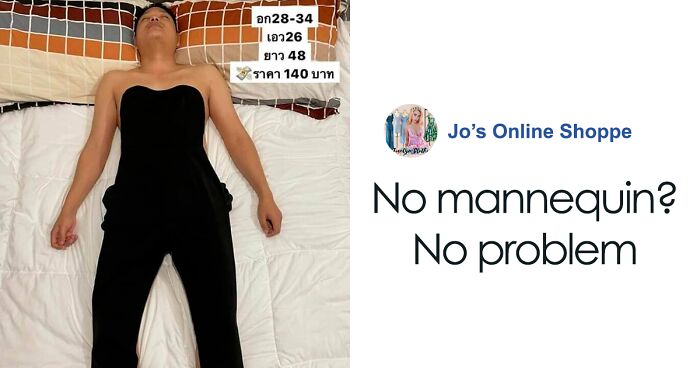
Wife Turns Her Unsuspecting Sleeping Husband Into A Model To Sell Her Clothes Online And It Goes Viral
The pandemic has been a terrible time for fashion sales. Many shoppers have cut down on discretionary purchases, but even those who want to spend have found non-essential stores closed. So they’ve turned to e-commerce, where retailers are happily satisfying their desire for new clothes.
And while smaller sellers can’t compete with big brands in terms of marketing, they too can stand out from the crowd and attract new customers. All it takes is a little bit of creativity. And one woman from the Philippines who runs an online boutique has just given the entire industry a masterclass on how it’s done.
Jocelyn May Jazareno Caday, the owner of Jo’s Online Shoppe, found her husband sleeping in a “handy” position, so she decided to use him as a clothing model, showcasing her new items. She “made” him wear pants, dresses, skirts, and flowery tops, and took pictures throughout the entire process, which went viral immediately after Jocelyn uploaded them to her shop’s Facebook page.
Image credits: Jo’s Online Shoppe
Clothing stores have been among the worst-hit retail sector. For example, at the height of the pandemic, their sales were down four-fifths in the UK. Feedback from retailers suggests that despite clothing stores reopening they are still being severely affected by social distancing measures, hitting footfall, and the ability of consumers to try on clothes.
But it’s been a different story for some online sellers. For example, Zalando, a Berlin-based company that bills itself as Europe’s largest online fashion retailer, achieved exceptional profitable growth in the third quarter of 2020. Gross Merchandise Volume (GMV) and revenue grew by 29.9 percent and 21.6 percent to 2.5 billion and 1.8 billion euros, respectively.
At the time of publishing these results, David Schröder, Chief Financial Officer, said: “As the second coronavirus wave is starting more forcefully than anticipated, we are much better prepared than earlier in the year. Our Starting Point for Fashion strategy continues to enable us to turn the accelerated consumer demand shift towards digital offerings into business opportunities for Zalando and its partners.”
Between 2023-2025, the Philippines is aiming to be in the top 15 global garment exporters, which would mean garment exports would need to increase by 21.7% annually. Among strategies to reach the goal, the country is looking at addressing smuggling and providing capital, land, and grant incentives. Maybe they should also encourage sellers to use their partners as models?
Why are so many positive comments hidden? I think they're just down voted because they were hidden, and people automatically thought it was bad but...
I don't think so... BlueReaper's comment was at plus 2 (including my up vote) when I read the reply I got from Meike, I was at plus 3, BlueReaper was at plus 5 Meike was also at plus something. We are all in the negative now....You were at negative 2, I just upvoted you....
Load More Replies...is she still selling..? These are cute and in perfect shape, lmao
This is hilarious , clearly shows how quirky marketing techniques can help boost sales
Please check the Original of the Photo before you published the NEWS!!! It is original from Thai Shop in Facebook. The girls in Philippines just post it in her Shop. Here is the ORIGINAL and OWNER of the Idea...you can see a lot of his Photos on this https://www.facebook.com/permalink.php?story_fbid=109926764400017&id=105288561530504
I want the pink flower shirt with the white shorts outfit😄
Load More Replies...Hold the heck up, why are most of the positive comments being downvoted so much and the negative ones are not??? That’s some bull crap.
47 comments downvoted out of 48... That's just very very odd 🤔
Load More Replies...I think her husband (with the great legs) is in on the photo shoot. Nonetheless, the clothes are beautiful.
I don't know but it sure did get a whole lot of people who were not interested to look didn't it?
Load More Replies...Why are so many positive comments hidden? I think they're just down voted because they were hidden, and people automatically thought it was bad but...
I don't think so... BlueReaper's comment was at plus 2 (including my up vote) when I read the reply I got from Meike, I was at plus 3, BlueReaper was at plus 5 Meike was also at plus something. We are all in the negative now....You were at negative 2, I just upvoted you....
Load More Replies...is she still selling..? These are cute and in perfect shape, lmao
This is hilarious , clearly shows how quirky marketing techniques can help boost sales
Please check the Original of the Photo before you published the NEWS!!! It is original from Thai Shop in Facebook. The girls in Philippines just post it in her Shop. Here is the ORIGINAL and OWNER of the Idea...you can see a lot of his Photos on this https://www.facebook.com/permalink.php?story_fbid=109926764400017&id=105288561530504
I want the pink flower shirt with the white shorts outfit😄
Load More Replies...Hold the heck up, why are most of the positive comments being downvoted so much and the negative ones are not??? That’s some bull crap.
47 comments downvoted out of 48... That's just very very odd 🤔
Load More Replies...I think her husband (with the great legs) is in on the photo shoot. Nonetheless, the clothes are beautiful.
I don't know but it sure did get a whole lot of people who were not interested to look didn't it?
Load More Replies...
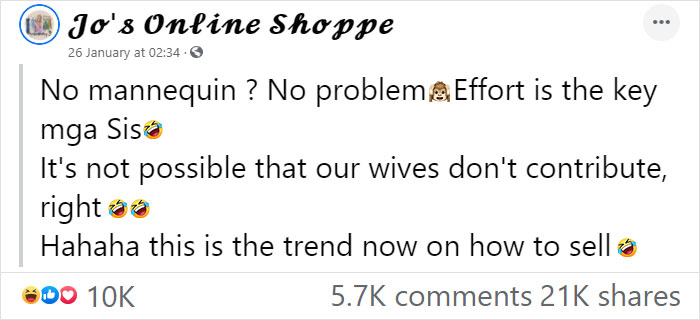
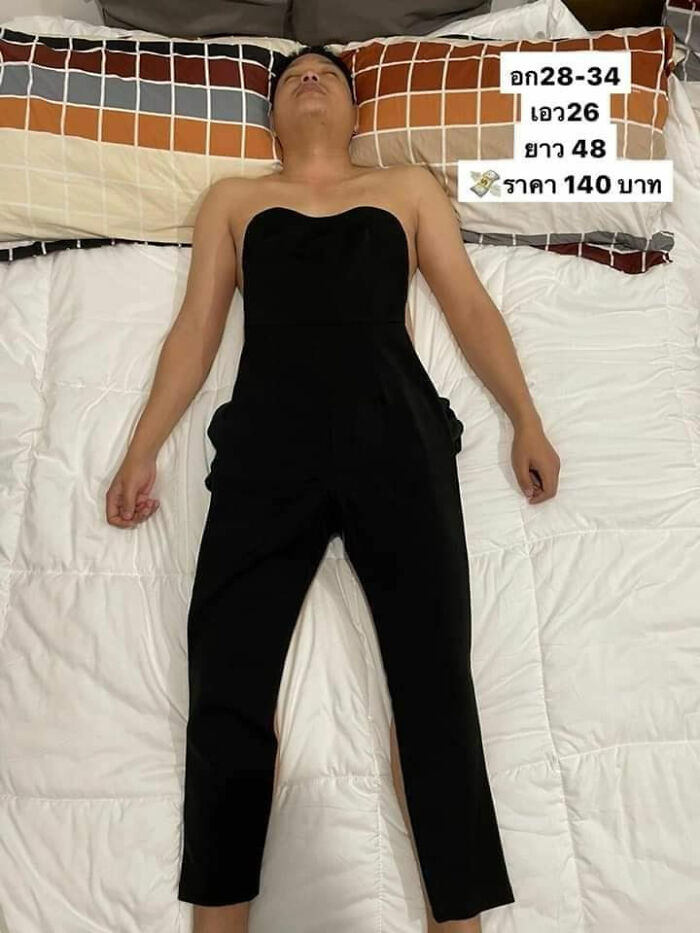


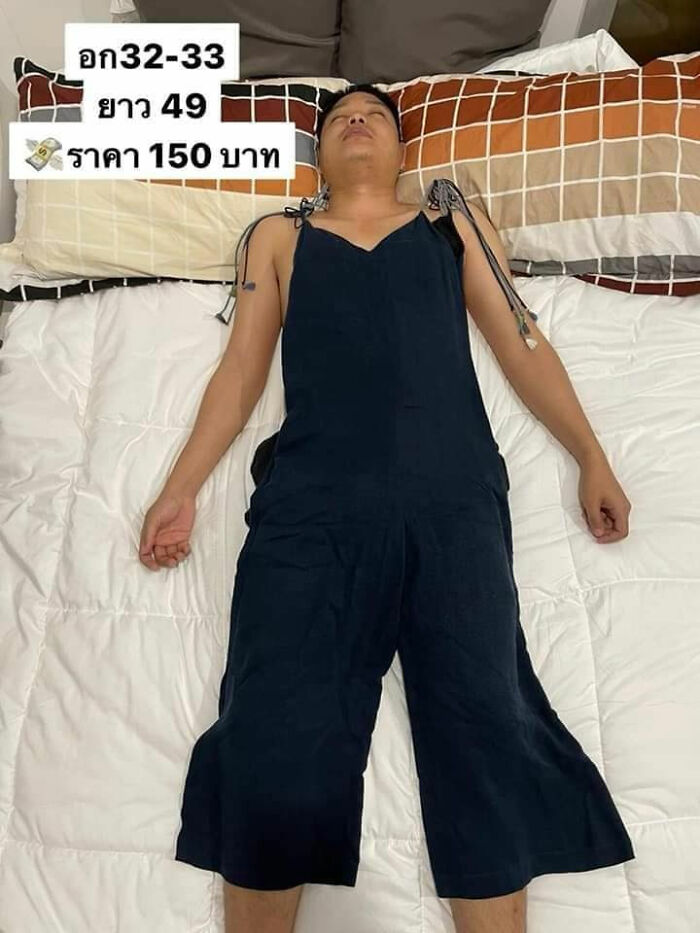

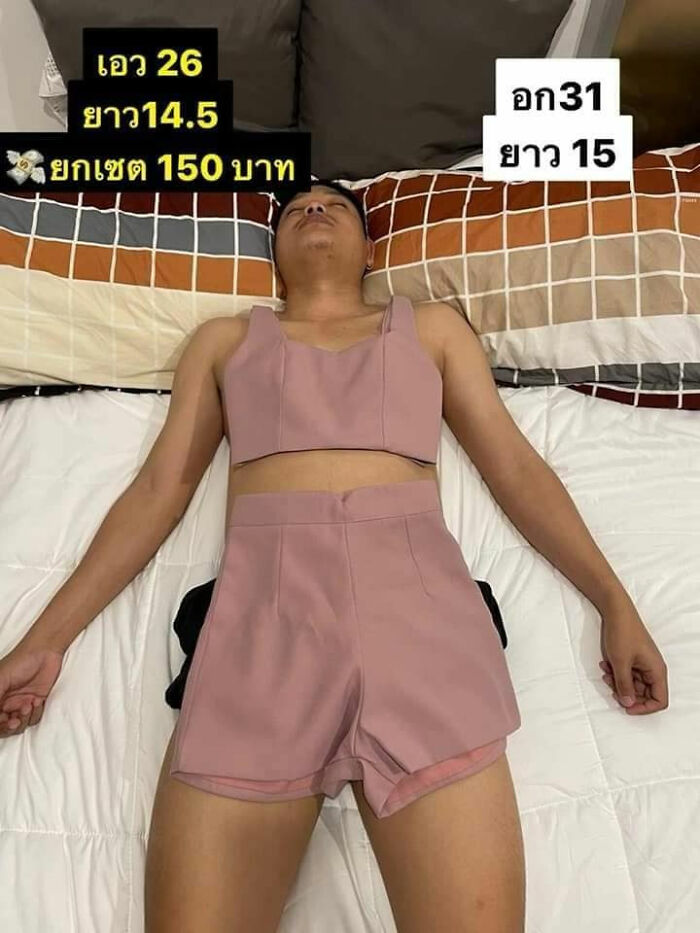


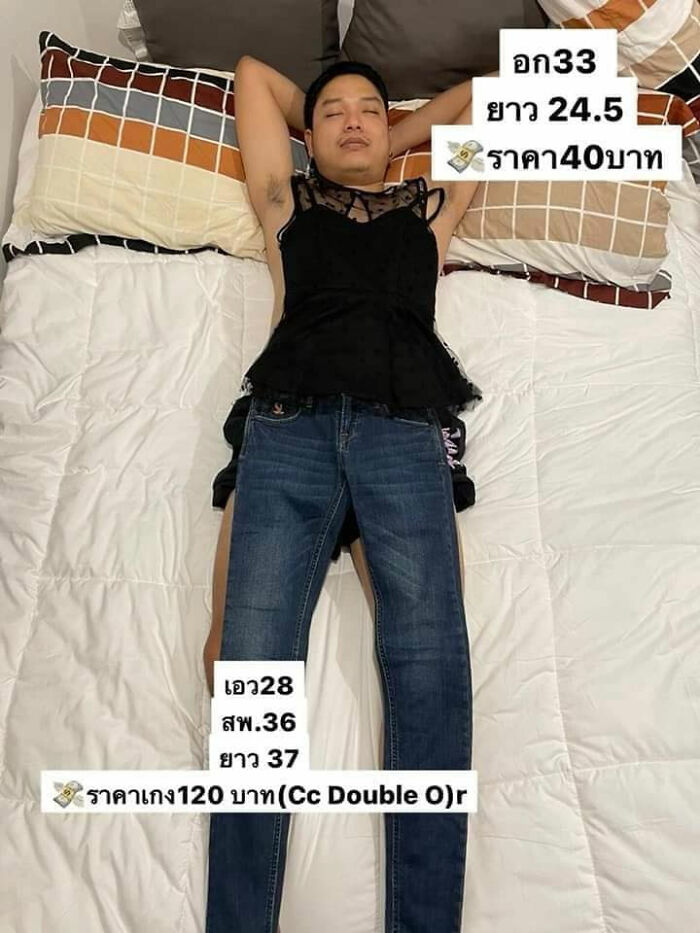


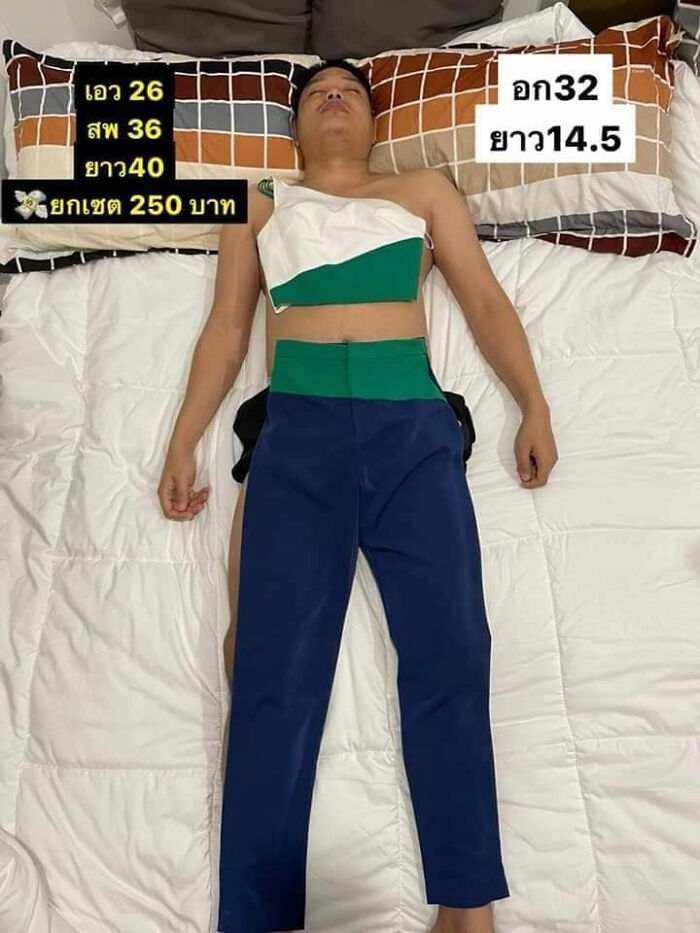




233
63